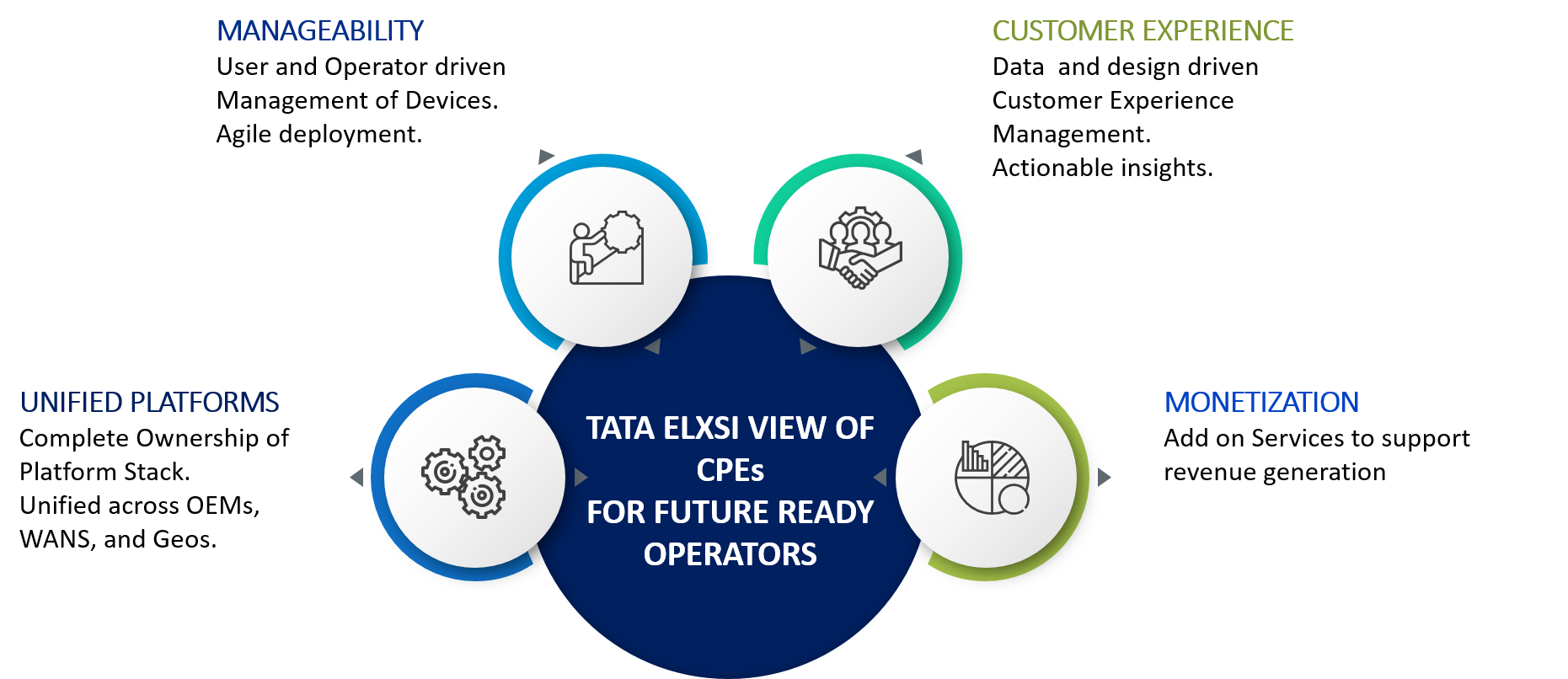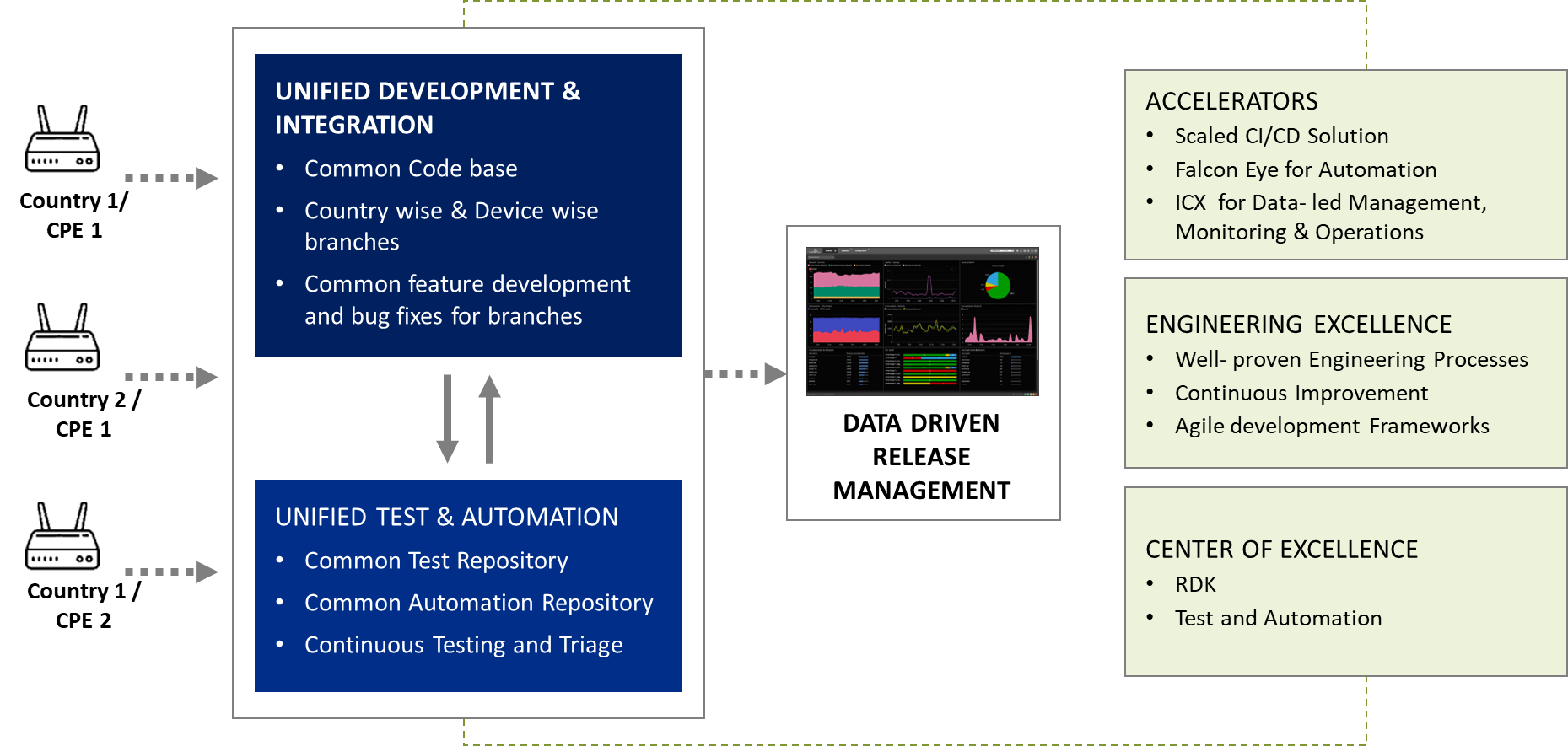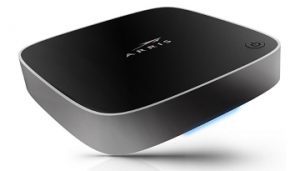
RDK European Summit: Best Ever!
RDK European Summit: Best Ever! Thanks to those of you who joined us in Amsterdam for what was the seventh annual RDK European Summit! Here’s

Technology trends and customer needs are driving the growth in Broadband services for operators. Due to the current COVID situation and Work From Home approach, the bandwidth requirements are increasing with multiple viewing screens at home. New technology is also a driver for higher bandwidths. High Speeds are offered by DOCSIS 3.1, FTTH and VDSL. This evolving market requires Operators to bring out the state of the art Gateway (Home Router) platforms.
Here is Tata Elxsi’s vision for the engineering and deployment for these NextGen CPEs.
Unified Platform Approach for RDK based Next-Generation Devices
Operators are looking for multi-country, multi-OEM, and multi-WAN products in their portfolio of CPEs. An example is an operator deploying GPON and DOCSIS gateways from two OEMs in two countries. In a high-growth market, service providers need to expand their footprint and roll out new services to address competition. Faster rolls outs are the need of the day. Having multiple code bases to address is a significant deterrent to improving the rollout rate. Leveraging RDK, Tata Elxsi is offering a unified process for development and test across platforms, geos, and OEMs.
A common code base with the country and platform-specific branches form the key to the unified development, and a one-touch CI/CD provides faster and efficient builds. The consolidated test and automation provide a master set of test cases that form a collection for each platform-based execution. Automation also plays a crucial role in improving efficiency as well as the reliability of deployments.
The Unified platform brings in a one-stop integrated engineering solution suite approach to the development and test process. It provides a unification of the teams working in multiple platforms improving speed and cost-efficiency.

Device Management
Customers today are intelligent, independent, tech savvy and expect lightning fast, 24/7 customer support. Apart from expecting 24/7 customer support, many consumers are also looking for more self-help options. At the same time, operators are looking for ways to cut costs and improve efficiency. Technologies like AI, Data analytics, and device management standards are becoming key enablers in realizing solutions for improving customer experience and reducing operational costs through automation, remote monitoring, and management of devices and services. The NextGen CPEs are evolving as Managed devices. The Management of devices falls into two categories: User management and Operator Management. A simplified management interface provided through a mobile app enables the end-users to self-manage their home network devices and resolve fundamental network issues, thus reducing calls to the support centre. The user can also manage advanced features like bandwidth control, bandwidth calendaring, or insights into connected devices. These advanced capabilities can result in improved NPS for the service as well as a reduction of Opex.
As part of operator management, a unified platform provides features such as remote troubleshooting and resolution of issues resulting in reduced truck rolls. RDK provides operators with advanced features such as RFC to enable a phased multi-feature delivery or disable a troubled service. As part of device management, operators can also resolve issues related to Wi-Fi congestion.
Customer Experience
Customer experience management is about an ever-evolving customer expectation and is gaining importance across various business functions. Customer experience is determined by a variety of factors ranging from reduced interruptions in service through insights derived from CPE data to interactive user friendly UX design. Effective customer experience management offers seamless experiences to ensure customer loyalty, Omni-channel delivery to provide all stakeholders with consistent information across all touchpoints and improve productivity and operational efficiency. RDK-based CPEs provide the right amount of telemetry information and logs for data models. Once consolidated and applied with Machine learning models, they can provide intelligent insights into the operations of the CPE. Insights such as higher CPU or memory utilization can point to an issue in the code; similarly, a low RSI for a connected STB can point to the low video quality experienced. Once the issues are known, they can be resolved proactively avoiding a call to the service centre. The experience can be measured as a set of indices and can be used for improving the NPS. For example, the deployment health index can be used for a phased deployment after evaluating the health at each phase of the deployment.
Monetization
It is critical for operators to stay updated about the most popular monetization methods and what to expect in the future. Operators will diversify their monetization model to avoid being reliant on a small group of highly valuable users. Some of the monetization strategies which operators can expand to as part of premium offerings will include high quality gaming experience, enhanced video performance with the help of an edge CDN, etc. Tata Elxsi envisions options such as firewall, parental control, VPNs, and device management apps to lead the monetization drive. These apps can be present in the gateway, triggered on need, and monetized for the usage.
Service providers need to develop effective device deployment and management strategies and leverage technologies that will help them to grow amidst rising demands and fierce competition. Tata Elxsi’s vision for next-gen RDK CPEs comprised of a unified platform approach, operator/user-driven device management, data/design-driven customer experience and monetization solutions can help operators with faster rollouts, increased profitability, operational efficiency and enhanced experience management resulting in higher NPS and improved revenues.

RDK European Summit: Best Ever! Thanks to those of you who joined us in Amsterdam for what was the seventh annual RDK European Summit! Here’s

The RDK Lab Accelerator and You! Let this serve as an open thank you to the wider RDK Community, for voicing your need to develop

Integrated TV Viewing Experiences: Seamlessly Onboard Apps and Premium OTT Services The TV has become a smart platform that can deliver any and all content
